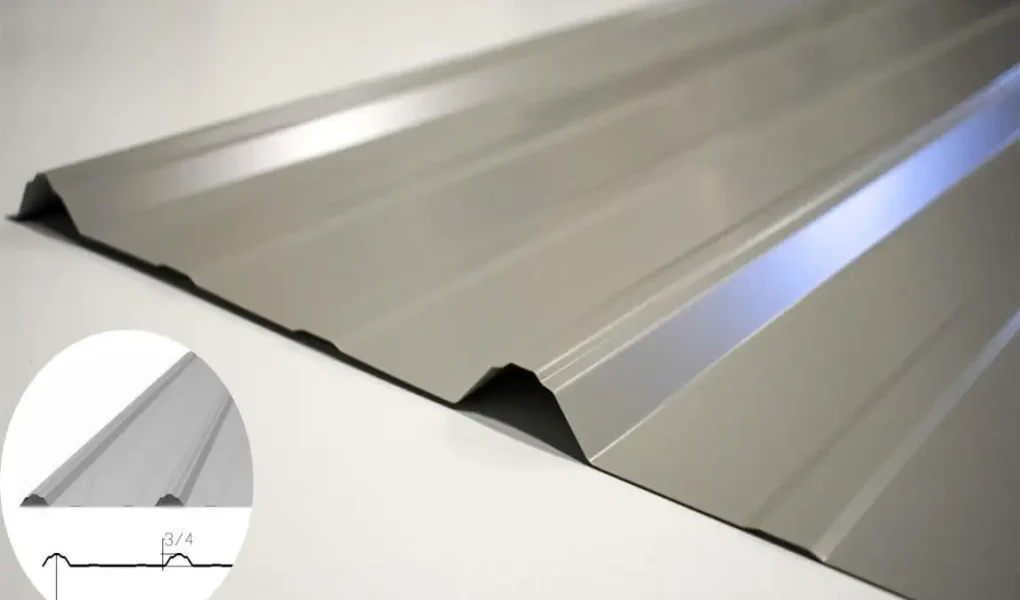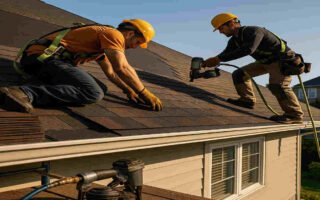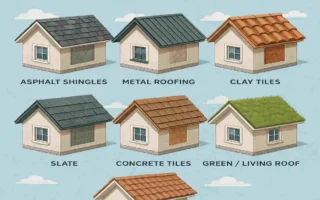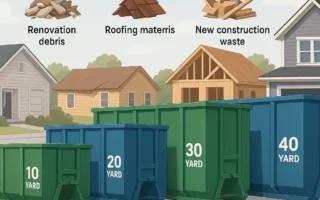When it comes to roofing options, metal roof panels are a popular choice due to their durability, energy efficiency, and sleek appearance. But one question often arises when planning for a metal roof: “How wide are metal roof panels?” The width of these panels plays a crucial role in determining the cost, installation process, and overall appearance of your roof. Choosing the correct width can make a significant difference in the long-term performance of your house roof.
What Are Metal Roof Panels?
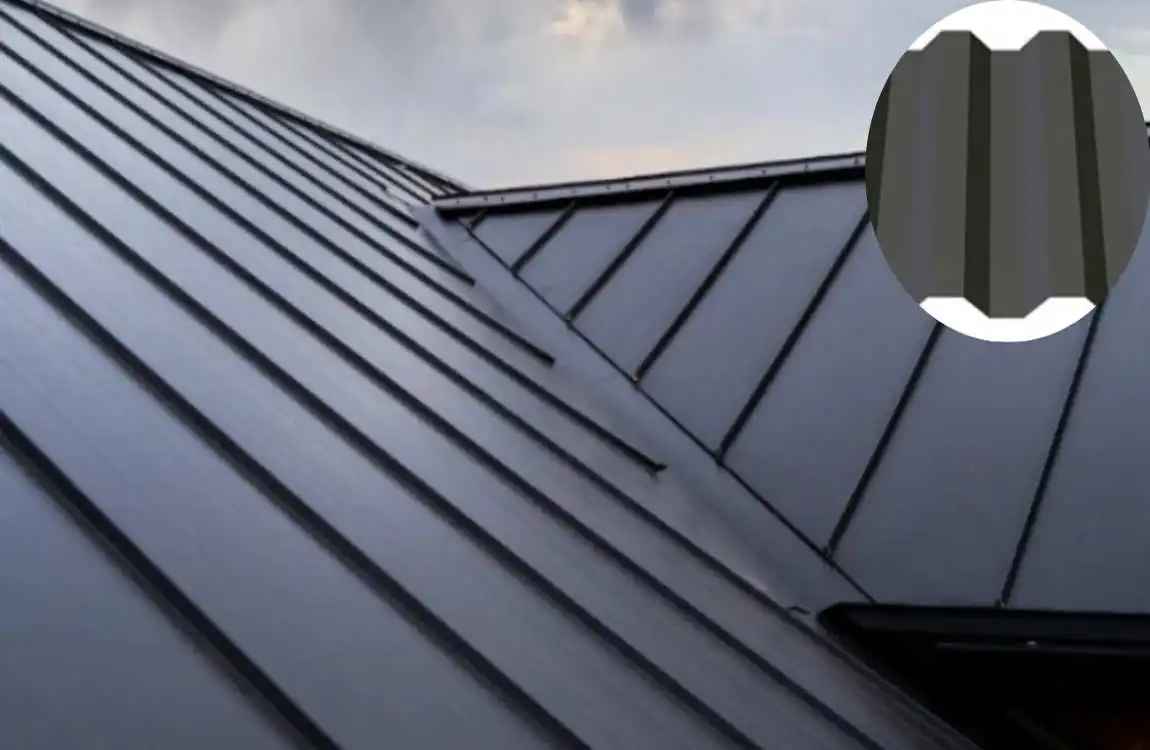
Metal roof panels are flat or corrugated sheets of metal used to cover the roof features of homes, commercial buildings, and other structures. These panels are made from durable materials such as steel, aluminum, copper, or zinc, and they serve as a protective barrier against the elements while adding a modern aesthetic to your home.
Common Materials Used for Metal Roof Panels
- Steel: The most commonly used material due to its strength, affordability, and availability.
- Aluminum: Lightweight and corrosion-resistant, ideal for homes in coastal areas.
- Copper: A high-end option that develops a beautiful patina over time.
- Zinc: Offers excellent durability and a self-healing property for scratches.
Why Are Metal Roofs So Popular?
Metal roofing has grown in popularity due to its many benefits:
- Longevity: Metal roofs can last 40-70 years or more.
- Energy Efficiency: Reflects sunlight, reducing cooling costs.
- Low Maintenance: Requires minimal upkeep compared to traditional asphalt shingles.
- Sustainability: Often made from recycled materials and fully recyclable at the end of their lifespan.
Now that we understand what metal roof panels are, let’s examine their sizes and the variations they can exhibit.
Standard Widths of Metal Roof Panels
So, how wide are metal roof panels? This is a common question among homeowners planning their roofing projects. Metal roof panels are available in a range of widths to accommodate various needs and preferences.
Typical Width Range
Most metal roof panels fall within a standard width range of 12 to 36 inches. However, some manufacturers offer extra-wide panels that can measure up to 48 or even 60 inches.
Panel Type Width Range
Standing Seam Panels 12-24 inches
Corrugated Panels 24-36 inches
R-Panel/PBR Panels Around 36 inches
Extra-Wide Panels 48-60+ inches
Why Do Widths Vary?
The width of metal roof panels can vary depending on:
- Building Size: Larger panels work well for expansive roofs, while smaller panels are ideal for intricate designs.
- Design Preferences: Narrow panels give a sleek, modern appearance, while wider panels create a bold, industrial look.
- Manufacturers: Different companies may offer unique panel widths to suit their product line.
Understanding the standard widths is key, but it’s equally important to know the types of panels available and their specific widths.
Types of Metal Roof Panels and Their Widths
Metal roof panels come in several types, each with its own unique design and standard widths. Let’s break down the most common types:
Standing Seam Panels
- Width Range: 12-24 inches
- Appearance: These panels feature raised seams that interlock, resulting in a clean, modern aesthetic.
- Best For: Residential homes, modern architecture, and high-performance roofing systems.
- Key Benefit: Their interlocking design provides excellent water resistance.
Corrugated Panels
- Width Range: 24-36 inches
- Appearance: Known for their wave-like design, these panels are versatile and often used in agricultural and residential settings.
- Best For: Homes, barns, and sheds.
- Key Benefit: Lightweight, affordable, and easy to install.
R-Panel or PBR Panels
- Width Range: Around 36 inches
- Appearance: These are flat panels with reinforced ribs for added strength.
- Best for: Commercial and industrial buildings, as well as residential use.
- Key Benefit: Durable and cost-effective.
Extra-Wide Panels
- Width Range: 48-60+ inches
- Appearance: Wide panels are ideal for large, expansive roof design.
- Best For: Warehouses, commercial buildings, or custom homes with minimalist designs.
- Key Benefit: Fewer seams, which can reduce the risk of leaks.
How Panel Width Impacts Roofing Projects
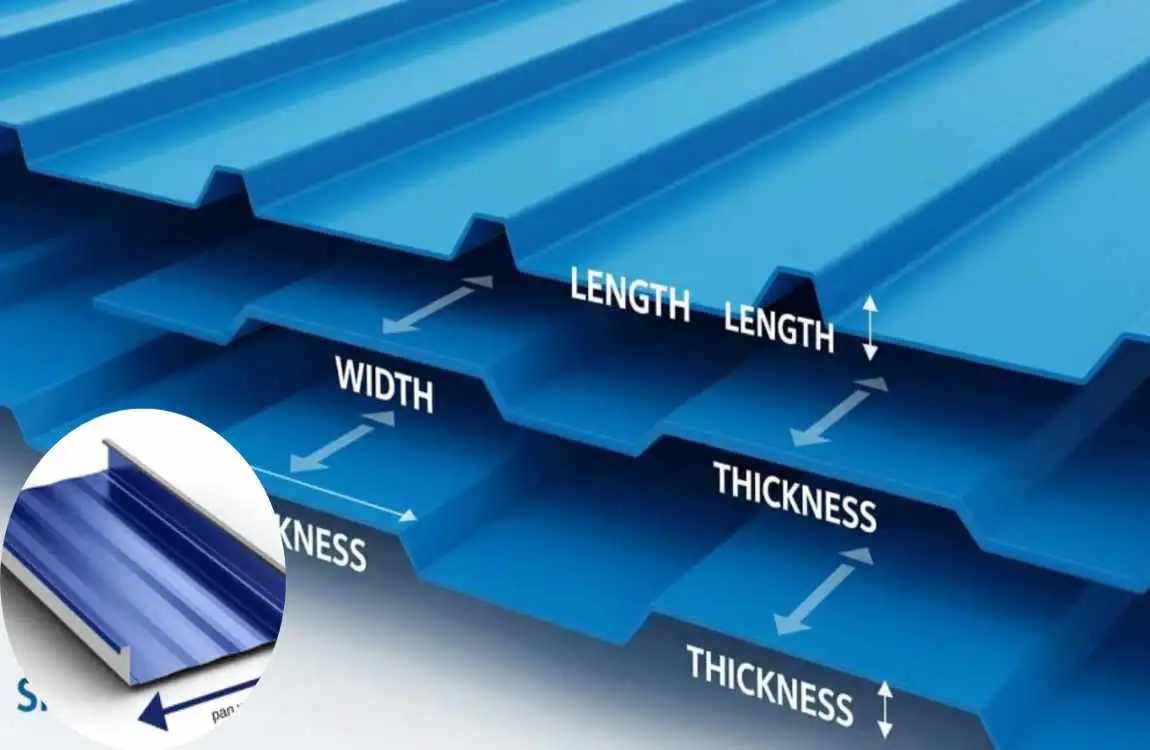
The width of your metal roof panels not only affects the look of your roof but also impacts installation, cost, and durability. Let’s explore how:
Installation Speed
Wider panels cover more surface area, which can reduce the time it takes to install your roof. However, narrower panels are easier to handle and may be better suited for complex roof shapes.
Cost Efficiency
- Wider Panels: Typically, fewer panels are required, resulting in cost savings on materials.
- Narrower Panels: These may require more labor, which can drive up Durability and Weather Resistance
The number of seams on your roof impacts its durability. Fewer seams (with wider panels) mean fewer opportunities for water to seep through. However, narrower panels may provide better performance in high-wind areas.
Aesthetic Considerations
The width of your panels can significantly influence your roof’s appearance. Narrow panels create a sleek, modern look, while wider panels provide a more industrial or minimalist aesthetic.
Choosing the Right Width for Your House
When selecting the ideal panel width for your home, consider these key factors:
Roof Size and Slope
- For smaller roofs, narrow panels (12-18 inches) may be the best option.
- Larger roofs can accommodate wider panels (24-36 inches or more in width).
Local Climate
- In areas with heavy rainfall, fewer seams (wider panels) can help reduce leaks.
- High-wind regions may benefit from narrower roof panels for added stability.
Architectural Style
- Modern homes often look best with standing seam panels (12-24 inches).
- Traditional or rustic homes pair well with corrugated panels (24-36 inches).

